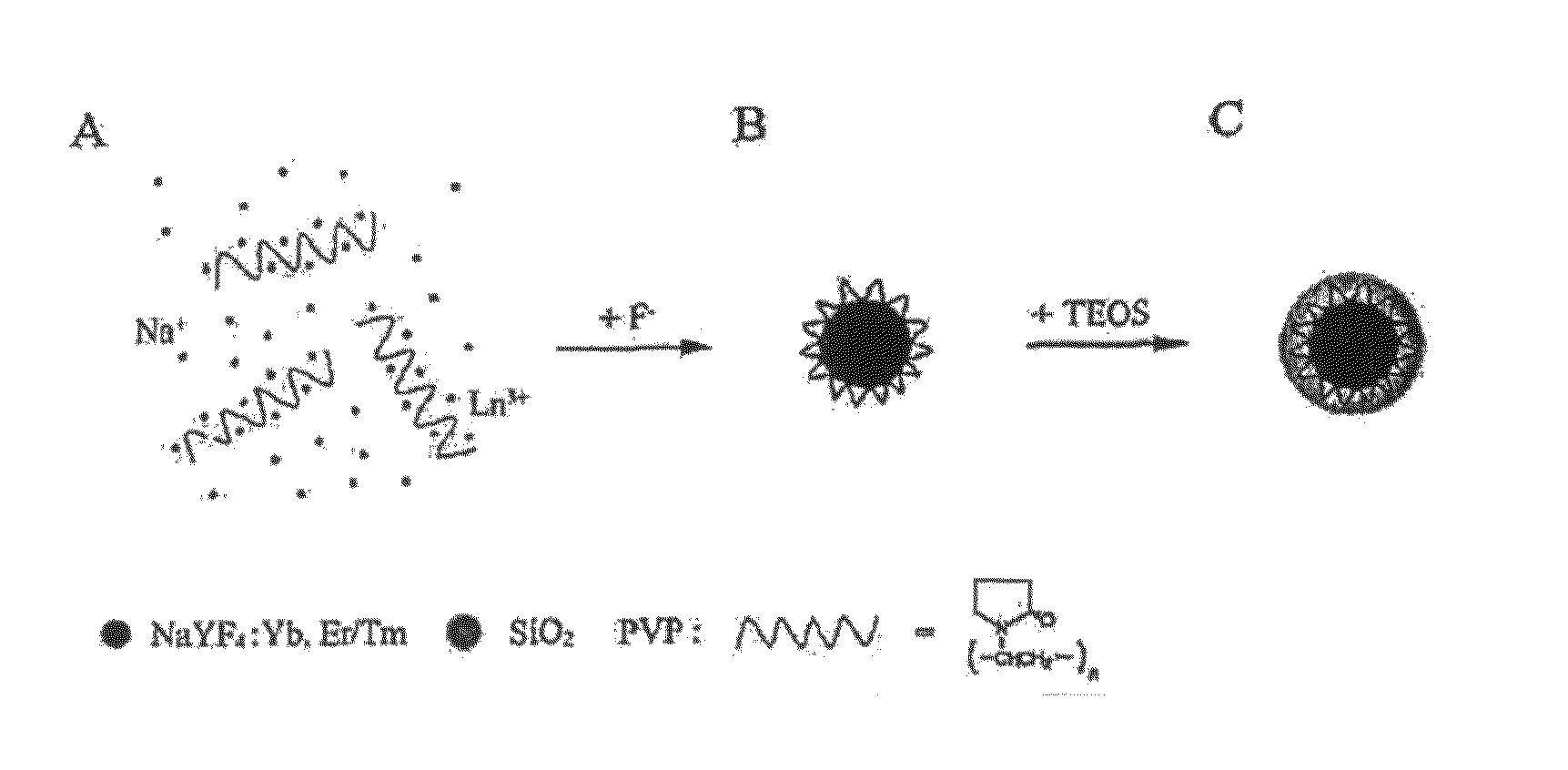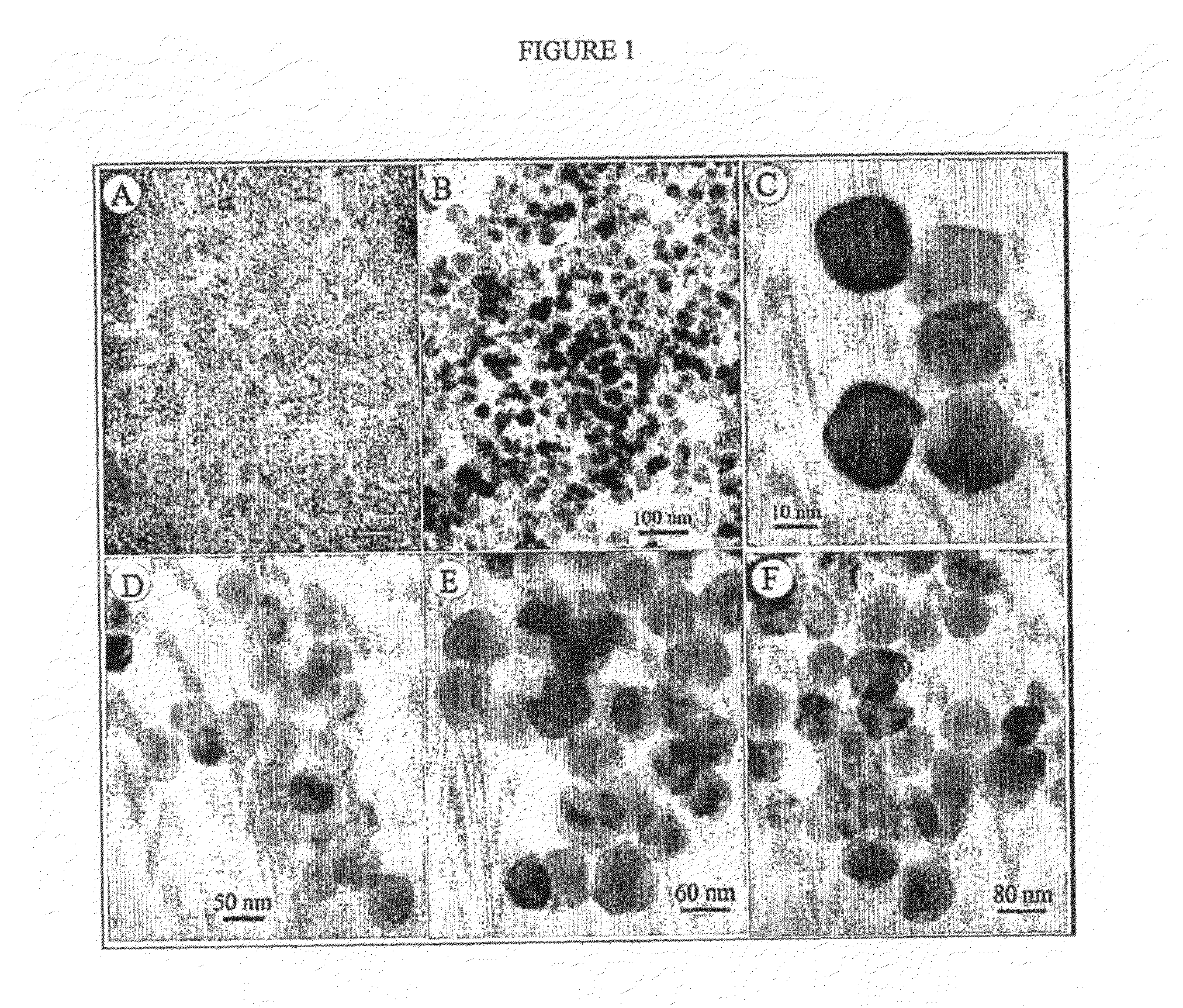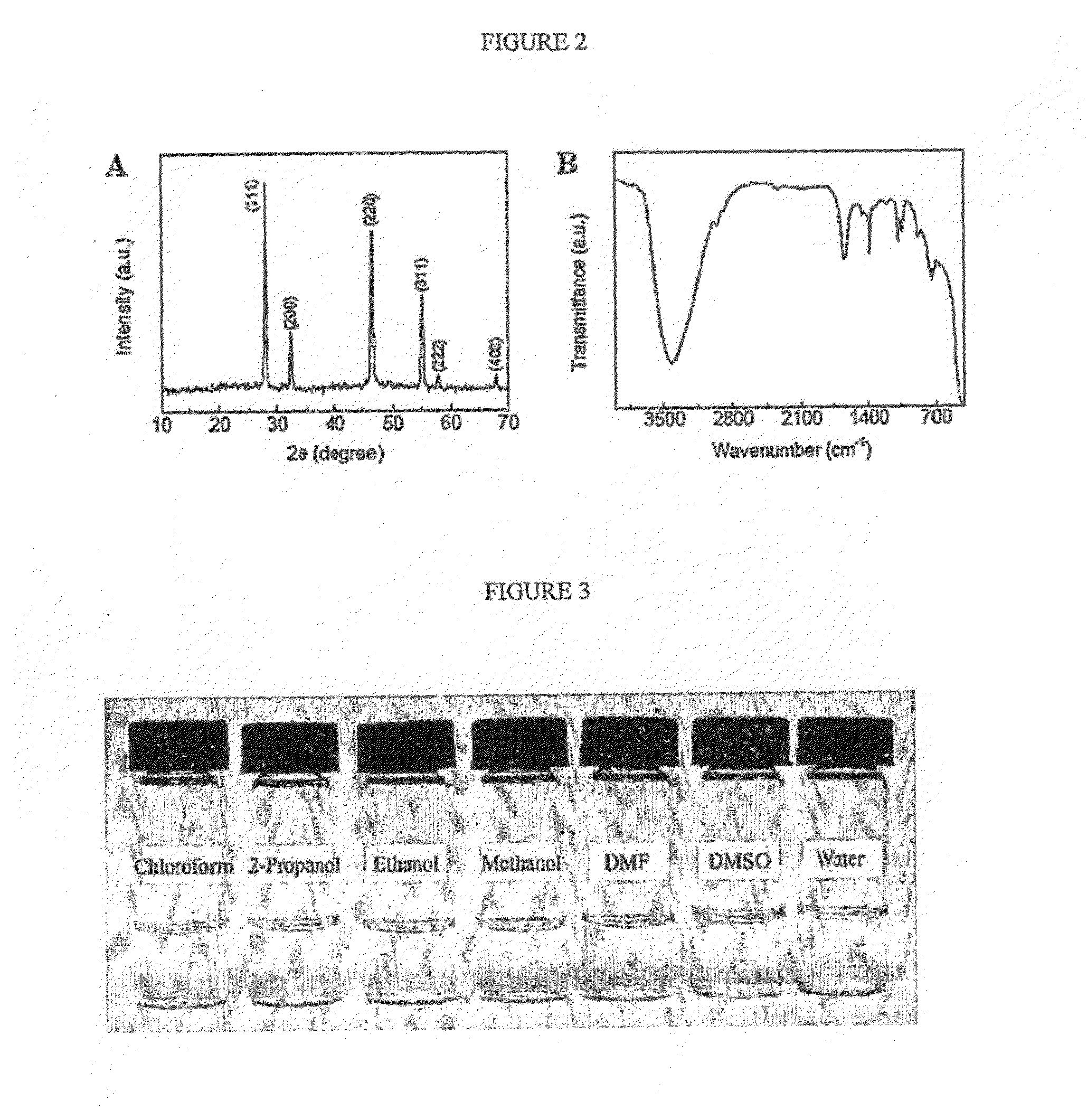Upconversion fluorescent nano-structured material and uses thereof
a fluorescent nano-structured material and fluorescent nano-structure technology, applied in the direction of luminescent dosimeters, optical radiation measurement, instruments, etc., can solve the problems of reducing the detection sensitivity, affecting the detection accuracy, so as to achieve great potential for use
- Summary
- Abstract
- Description
- Claims
- Application Information
AI Technical Summary
Benefits of technology
Problems solved by technology
Method used
Image
Examples
example 1
Preparation of PVP / NaYF4:Yb(20%),Er(2%) and PVP / NaYF4:Yb(20%),Tm(2%) Nanocrystals
[0101]The PVP / NaYF4:Yb(20%),Er(2%) nanocrystals were synthesized as follow: Y2O3 (88 mg, 0.78 mmol), Yb2O3 (39.4 mg, 0.2 mmol) and Er2O3 (3.9 mg, 0.02 mmol) were dissolved in 10 mL 10% HNO3, and then the solution was heated to evaporate water completely. 10 mL ethylene glycol was added to dissolve the obtained LnNO3 (Ln=Y 78%, Yb 20%, Er 2%). Polyvinylpyrrolidone (PVP40, 0.5560 g) and NaCl (0.0588 g, 1 mmol) were subsequently added to the solution and heated to 80° C. until a homogeneous solution was formed. NH4F (0.1482 g, 4 mmol) was dissolved in another 10 mL ethylene glycol in 80° C. and then added dropwise into the LnNO3-ethylene glycol solution and maintained at 80° C. for 10 min under stirring. The solution was then heated to 160° C. for 2 hours and cooled down to room temperature. The product was centrifuged down from the solution and washed with absolute ethanol twice.
[0102]The PVP / NaYF4:Yb(20%...
example 2
Preparation of PEI / NaYF4:Yb(20%),Er (or Tm)(2%)
[0112]In another approach, PEI is used to prepare nanocrystals. In particular, PEI may be used to control the growth of NaYF4 nanocrystals and to functionalize their surfaces. PEI is a highly branched polymer with an appreciable thermal stability, which makes it the polymer of choice for hydrothermal synthesis reaction.
Reagents
[0113]Polyethylenimine (PEI,(—NHCH2CH2—)x(—N(CH2CH2NH2)CH2CH2—)y), sodium chloride (NaCl, >=99.0%), yttrium chloride hexahydrate (YCl3.6H2O, 99.99%), ytterbium oxide (Yb2O3, 99.99%), erbium oxide (Er2O3, 99.99+%), thulium oxide (Tm2O3, 99.99%), ammonium fluoride (NH4F, 98+%), were purchased from Sigma-Aldrich. All of the reagents were used as received without further purification. PEI stock solution (5 wt %) was prepared by dissolving PEI in DI water. YCl3 and NaCl stock solutions (0.2 M) were prepared by dissolving YCl3.6H2O and NaCl respectively in DI water. YbCl3, ErCl3, and TmCl3 stock solutions (0.2 M) were p...
example 3
Biocompatibility of Nanoparticles
[0126]PEI / NaYF4:Yb3+, Er3+ nanoparticles were prepared as described in example 2. Transmission electron microscope (TEM) image (FIG. 13a) showed that these are well separated particles in solution that have a mean particle size of about 50 nm with a relatively narrow size distribution. The nanoparticles were well dispersed in PBS to form a clear solution at room temperature. When excited with 980 nm NIR laser, PEI / NaYF4:Yb,Er nanoparticles emit in the visible range with two relatively sharp peaks at 500-550 nm (green light) and 650-675 nm (red light) while PEI / NaYF4:Yb,Tm nanoparticles mainly emit in the blue region. The PEI / NaYF4:Yb,Er nanoparticles were chosen for subsequent experiments.
[0127]To be used for biological studies, the nanoparticles need to be stable in PBS or physiological solutions. The nanoparticles retained maximum luminescence when stored in PBS at room temperature for several weeks (FIG. 13b). The nanoparticles were also incubated...
PUM
| Property | Measurement | Unit |
|---|---|---|
| molecular weight | aaaaa | aaaaa |
| size | aaaaa | aaaaa |
| average molecular weight | aaaaa | aaaaa |
Abstract
Description
Claims
Application Information
 Login to view more
Login to view more - R&D Engineer
- R&D Manager
- IP Professional
- Industry Leading Data Capabilities
- Powerful AI technology
- Patent DNA Extraction
Browse by: Latest US Patents, China's latest patents, Technical Efficacy Thesaurus, Application Domain, Technology Topic.
© 2024 PatSnap. All rights reserved.Legal|Privacy policy|Modern Slavery Act Transparency Statement|Sitemap



